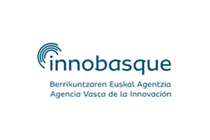 Aurreko ekintzak: Ezequiel Di Paolo. The enactive approach and the interactive brain hypothesis
Aurreko ekintzak: Ezequiel Di Paolo. The enactive approach and the interactive brain hypothesis
Ezequiel Di Paolo. The enactive approach and the interactive brain hypothesis
What: The enactive approach and the interactive brain hypothesis
Where: BCBL auditorium
Who: Ezequiel Di Paolo. PhD, Ikerbasque Research Professor. Centre for Life, Mind, and Society, UPV/EHU; visiting Professor, Centre for Computational Neuroscience and Robotics, University of Sussex, Brighton,UK
When: 12 PM, noon
I will briefly introduce the enactive approach as an alternative foundational program in cognitive science that has seen intense development over the last 2 decades. Rather than studying the mind in a functionalist frame, whereby the key questions regard how brain mechanisms give rise to experience and behaviour, the goals of the enactive approach are the strong naturalisation of cognitive and psychological vocabularies, thus providing principled theories of agency, sense-making, and intersubjectivity from an embodied perspective that sees life and mind as continuous. After sketching some of the main technical concepts (autonomy, agency, habits, sensorimotor agency, participatory sense-making) and enumerating how they have been taken up in various disciplines, I will focus the discussion on the specific case of social cognition and social neuroscience. The subtle and complex, multi-scale dynamics of real-world social interactions have until recently been neglected as a source of explanatory power in social cognition research. We have argued that interactive dynamics can play enabling and even constitutive roles in giving rise to social performance, thus expanding the locus of relevant cognitive processes beyond the brain. Along these terms, we have introduced the interactive brain hypothesis, which advocates an interactive origin to the functioning of socially relevant brain processes. I will argue for evidence in support of this hypothesis, but more interestingly I will indicate how it can help shape new research questions, many of which are already being taken up in dual hyperscanning studies and studies on readiness to interact. Time permitting I will mention some of our recent work that move these ideas into an embodied approach to language.
De Jaegher, H, Di Paolo, E. A. and Gallagher, S. (2010). Can social interaction constitute social cognition? Trends in Cognitive Sciences, 14(10), 441 – 447. http://dx.doi.org/10.1016/j.tics.2010.06.009.
De Jaegher, H., Di Paolo, E. and Adolphs, R. (2016). What does the Interactive Brain Hypothesis mean for Social Neuroscience? A dialogue, Philosophical Transactions of the Royal Society B, 371, 20150379. http://dx.doi.org/10.1098/rstb.2015.0379.
Di Paolo, E. A., Buhrmann, T., and Barandiaran, X. (2017). Sensorimotor Life: An Enactive Proposal. Oxford University Press
Di Paolo, E. A., Cuffari, E. C., and De Jaegher, H. (2018). Linguistic Bodies: The Continuity between Life and Language. MIT Press.
Di Paolo, E. A. and De Jaegher, H. (2012). The interactive brain hypothesis. Frontiers in Human Neuroscience, 6:163, doi: 10.3389/fnhum.2012.00163.
Di Paolo, E. A. and Thompson, E. (2014). The enactive approach, in L. Shapiro, ed., The Routledge Handbook of Embodied Cognition, Routledge Press, pp. 68-78.








